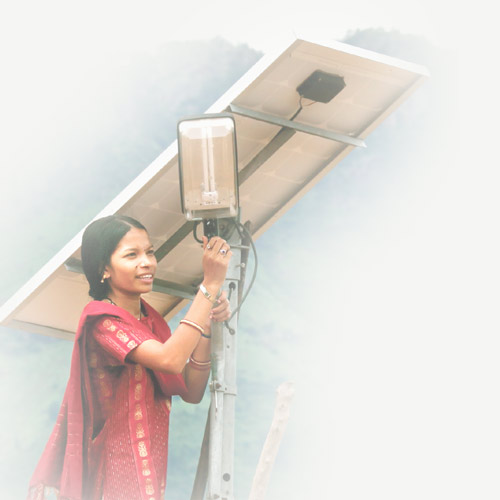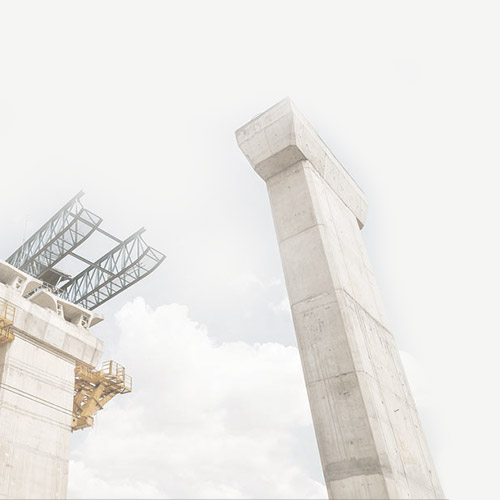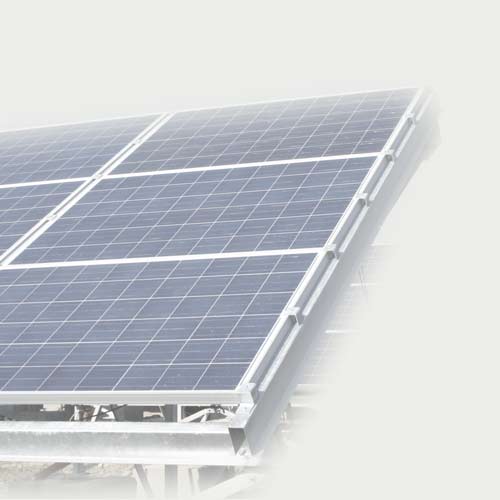Investing in sustainable infrastructure is key to tackling the three central challenges facing the global community: reigniting growth, delivering on the Sustainable Development Goals, and reducing climate risk in line with the Paris Agreement. Transformative change is needed now in how we build our cities, produce and use energy, transport people and goods, and manage our landscapes. And the challenge is urgent.
Investing in sustainable infrastructure is key to tackling three simultaneous challenges: reigniting global growth, delivering on the Sustainable Development Goals (SDGs), and reducing climate risk. Following the milestone achievements of 2015 – including the ambitious global goals set for sustainable development and its financing in Addis Ababa and New York, and through a landmark international agreement on climate action in Paris – the challenge is to now to shift urgently from rhetoric into action.
Infrastructure underpins core economic activity and is an essential foundation for achieving inclusive sustainable growth. It is indispensable for development and poverty elimination, as it enhances access to basic services, education and work opportunities, and can boost human capital and quality of life. It has a profound impact on climate goals, with the existing stock and use of infrastructure associated with more than 60% of the world’s greenhouse gas (GHG) emissions. Climatesmart, resilient infrastructure will be crucial for the world to adapt to the climate impacts that are already locked-in – in particular, to protect the poorest and most vulnerable people. Ensuring infrastructure is built to deliver sustainability is the only way to meet the global goals outlined above, and to guarantee long-term, inclusive and resilient growth.
A comprehensive definition of infrastructure includes both traditional types of infrastructure (everything from energy to public transport, buildings, water supply and sanitation) and, critically, also natural infrastructure (such as forest landscapes, wetlands and watershed protection). Sustainability means ensuring that the infrastructure we build is compatible with social and environmental goals, for instance by limiting air and water pollution, promoting resource efficiency and integrated urban development and ensuring access to zero- or low-carbon energy and mobility services for all. It also includes infrastructure that supports the conservation and sustainable use of natural resources, and contributes to enhanced livelihoods and social wellbeing. Bad infrastructure, on the other hand, literally kills people by causing deadly respiratory illnesses, exacerbating road accidents and spreading unclean drinking water, among other hazards. It also puts pressure on land and natural resources, creating unsustainable burdens for future generations such as unproductive soils and runaway climate change.
The challenge is urgent: the investment choices we make even over the next 2-3 years will start to lock in for decades to come either a climate-smart, inclusive growth pathway, or a high-carbon, inefficient and unsustainable pathway. The window for making the right choices is narrow and closing fast, as is the global carbon budget. The time is ripe for a fundamental change of direction. Today’s low interest rates and rapid technological change mean that this is an especially opportune moment for sustainable infrastructure-led growth, and for investing in a better future.
The world is expected to invest around US$90 trillion in infrastructure over the next 15 years, more than is in place in our entire current stock today. These investments are needed to replace ageing infrastructure in advanced economies and to accommodate higher growth and structural change in emerging market and developing countries. This will require a significant increase globally, from the estimated US$3.4 trillion per year currently invested in infrastructure to about US$6 trillion per year. The Global Commission has found that it does not need to cost much more to ensure that this new infrastructure is compatible with climate goals, and the additional up-front costs can be fully offset by efficiency gains and fuel savings over the infrastructure lifecycle. But many of these solutions require higher up-front financing, with the savings and other benefits accruing later. To deliver these solutions at scale, financing and investment have to be mobilised and better deployed from a multitude of different domestic and external sources, including national and local governments, multilateral and other development banks, private companies and institutional investors. International financing will be particularly important to support this transition in developing countries.

The year 2015 was a landmark one for sustainable development and climate change.
The world set ambitious goals through the Addis Conference on Financing for Development in July 2015, the adoption of the 2030 Agenda and the Sustainable Development Goals (SDGs) in September, and by reaching a landmark international agreement on climate action at COP21 in Paris in December. This new global agenda has mobilised the support not only of national leaders, but also of mayors, business leaders, investors, civil society and citizens. Now the task is to quickly turn that momentum into on-the-ground action to implement the Paris Agreement, achieve the SDGs, and reignite global economic growth.
Sustainable infrastructure is crucial to all three goals. Investing in it can support inclusive growth, enhance access to basic services that can reduce poverty and accelerate development, and promote environmental sustainability.
For growth: Boosting investment in sustainable infrastructure can stimulate demand at a time when many economies are struggling. For inclusive development: Infrastructure is key to the delivery of a number of essential services. It provides a foundation for much of the SDGs’ vision for inclusive development. For the climate: Infrastructure underpins all the major sources of greenhouse gas emissions: our energy systems, transport systems, buildings, industrial operations and land use.

Before tackling the “how-to” of financing sustainable infrastructure, this section first assesses the landscape of sources, actors and instruments of financing (see Figure 5). Section 2.2 then outlines the main barriers to shifting and scaling up the finance needed for sustainable infrastructure. Finally, Section 2.3 outlines some of the solutions that are starting to take hold in some countries and sectors, which can be scaled up to deliver sustainable infrastructure investment.
This discussion is organised around the various public and private sources of finance, yet equally important is the question of whether the finance is external or domestic. For example, the majority of global capital flows targeting climate change are raised and spent within the same country (72%) at the moment, and this share rises to 92% when looking at private flows alone.26 More generally, for all infrastructure investment in developing countries, domestic resources far outweigh external development finance.27 As such, domestic sources of capital, both public and private, remain particularly important for sustainable infrastructure investment, which in turn highlights the need to get domestic policies right. External finance – both public and private – will also feature and can in particular help catalyse domestic investment. However, as it is largely a domestic challenge, financing sustainable infrastructure requires domestic leadership and bold policy reforms to take the agenda forward.

This section focuses on cross-cutting reforms and institutional changes that could improve how the financial system works to support private finance and investment in sustainable infrastructure, including by scaling up and targeting public finance through development finance institutions (DFIs) to better leverage private finance. Building on the work of the UNEP Inquiry into the Design of a Sustainable Financial System, among others, the first part of this section highlights policy innovations in developing and developed countries that are starting to show how to better align the financial system with sustainable development, as well as international collaborations that are supporting national action to achieve that goal. The second part then examines some of the recent developments and innovations in multilateral development banks (MDBs) and other DFIs that are helping to increase their direct financing for sustainable infrastructure, and to crowd in private investment.
Transforming the financial system and its intermediaries is essential to scaling up sustainable infrastructure finance. Although public finance and investment will continue to play a critical role, particularly in low-income countries, large amounts of private capital are needed as well – and this will only flow if the right market signals are present within the financial system. Private financing of infrastructure that is high-carbon, not climate-resilient, or generally unsustainable still significantly outweighs private flows to sustainable infrastructure. Actions by regulators and policy-makers in the financial system can reorient incentives and reframe how investors view risks and potential returns. Reforms in the financial regulatory system and in the practices of central banks, combined with other policy reforms (e.g. to price carbon and support innovation and to use sustainability criteria when screening projects), can level the playing field between sustainable and unsustainable options and thus give a powerful boost to private investment in sustainable infrastructure.

Energy is expected to account for about 28% of total core infrastructure investment over the coming 15 years, or around US$25 trillion. Energy efficiency investment adds nearly this amount again, if not more.
Building sustainable energy infrastructure provides a triple win: it boosts growth, reduces air pollution and greenhouse gas emissions, and expands and improves energy access. It helps avoid the risks of high-carbon assets, and plays a key role in building resilience and overcoming poverty.
Yet a great deal of unsustainable infrastructure continues to be built. Worldwide, the equivalent of 1,500 coal plants are estimated to be in construction or are planned. The public sector accounts for more than half of investment in coal-fired power. And the risk of stranding is significant: globally, an estimated US$1.1 trillion of current energy-sector assets, particularly coal mines, may be stranded in the transition to a low-carbon economy. From a human health and environmental perspective, there may be an even greater risk if the power plants continue to go ahead, namely, that the political economy around vested interests could lock in business-as-usual energy production, even where it is economically suboptimal.

By 2050, two-thirds of the global population will live in cities, and over 70% of the global demand for infrastructure over the next 15 years is expected to be in urban areas.
This means that how cities develop is important both for growth and for climate change. The Sustainable Development Goals recognise the centrality of future urban development to achieving sustainability goals, in setting out Goal 11 to make cities inclusive, safe, resilient and sustainable.
Given the rapidity of urbanisation and the long-lived nature of urban infrastructure, the decisions made today by national and city decision makers – in partnership with private investors – will determine our economic future and climate security for the second half of the century. According to recent research, the urban infrastructure investment decisions taken just over the next five years will determine up to a third of remaining global carbon budget.

The land use sector incorporates all of the natural capital stocks and ecosystem services that provide the world’s people with benefits such as water filtration, food, fibre, fuel and livelihoods.
Enabling financing for and better provision and management of “natural infrastructure” is therefore critical to delivering on our global aims of inclusive growth and climate action. Global demand for food, fuel and fibre is growing rapidly, increasing pressure on natural capital and ecosystems and exacerbating climate risks. By 2050, agriculture will need to supply 70% more food than today to feed a growing population and deliver on Sustainable Development Goal (SDG) 2: ending hunger, in a way that does not harm the soil, water, biodiversity, ecosystem services or climate upon which human well-being and development depend.
Wood products are also increasingly in demand, propelled by the emerging and developing countries. One 2012 projection is for a tripling in demand by 2050, while a widely accepted and more recent projection forecasts increases from 28% (for sawnwood) to 192% (recycled paper products for pulp) to 2060. Although the majority of tree removals in 2015 still came from natural forests, planted forest area increased by 66% from 1990 to 2015, and now accounts for 7% of the world’s total forest area. Of the estimated 264 million hectares (ha) of planted forests in 2010, roughly three-quarters had commercial wood product production as their main purpose. These plantations are highly concentrated in a small number of countries, including China, the US, Russia, Japan and India. On a smaller scale in terms of total area but a larger scale proportionately, plantations of major tree crops are growing in tropical forest countries such as Indonesia, Malaysia, Brazil, Cambodia, Colombia, Liberia and Peru. Remote sensing shows that more than half the tree cover of peninsular Malaysia, for example, now consists of tree plantations, and
We live in a moment of great opportunity. Subscribe to the New Climate Economy Newsletter to get up to date information on how we can build a better economy and a better climate together.
We never share your information or use it to spam you.